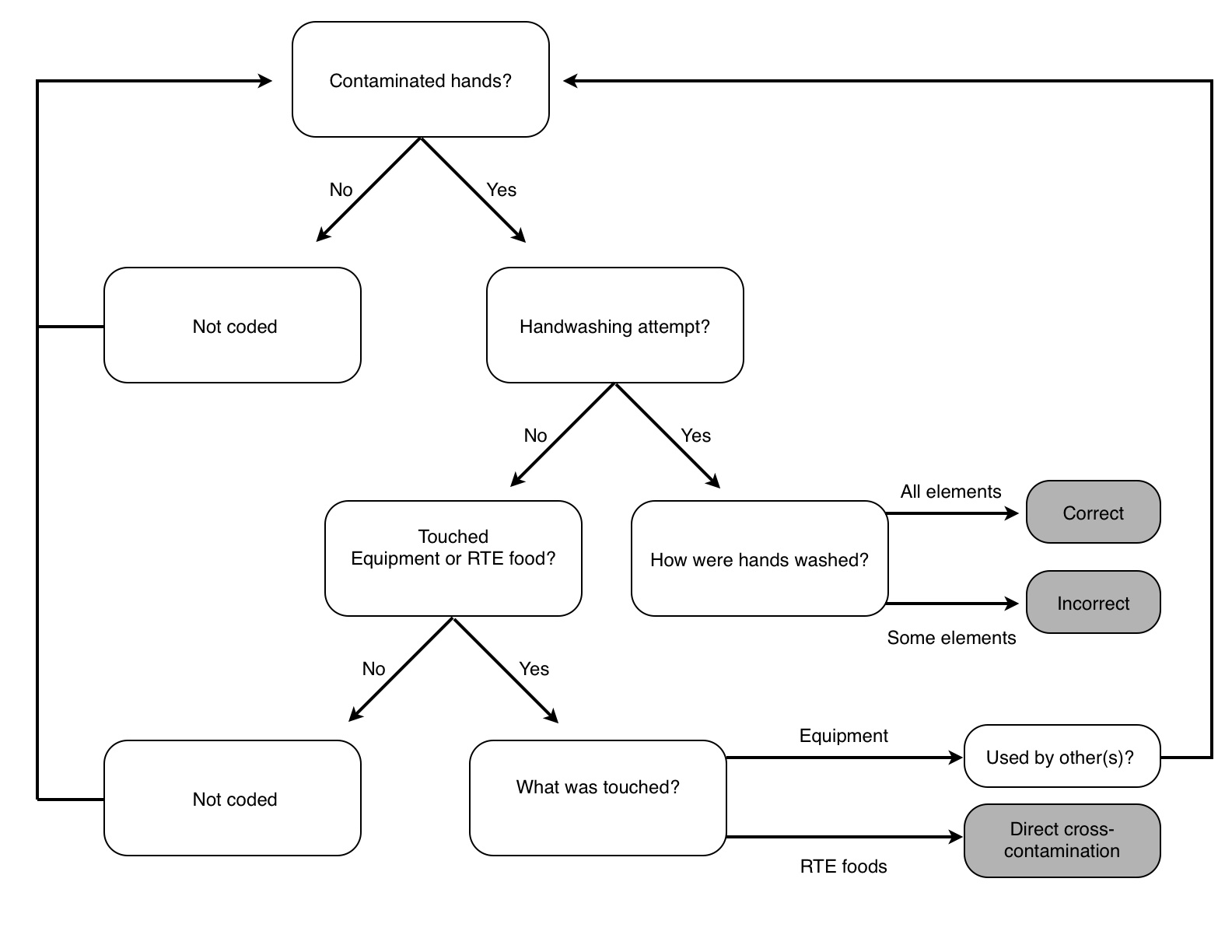Observation Rubric
Appx M_Observation Rubric.docx
In-Home Food Safety Behaviors and Consumer Education: Annual Observational Study
Observation Rubric
OMB: 0583-0169
Appendix M:
Observation
Rubric
In order to compare the food safety practices of primary meal preparers, a decision tree was developed to code actions using definitions from the U.S. Centers for Disease Control and Prevention’s contributing factors for foodborne illness, coupled with the WHO’s factors leading to foodborne illness (Bean et al., 1996; WHO, 2006 ). These definitions were supported by a review of scientific literature that focused on risky food safety practices (Anderson et al., 2004; Clayton and Griffith 2004; Green et al., 2006; Redmond et al., 2004). Definitions of food safety practices from the literature coupled with foodservice inspection criteria (FDA, 2013) led to the decision to focus the video observation methodology on capturing and cataloguing handwashing and cross-contamination incidents.
Notational analysis will be used to record actions and their frequencies. Notational analysis is a generic tool used to collect observed events and place them in an ordered sequence (Hughes and Franks, 1997). Notational analysis has been used to track food safety behaviors, enabling the recording of specific details about events in the order in which they occur by associating a time-stamp with those actions (Clayton and Griffith, 2004). This is especially useful when looking at sanitation steps limiting cross-contamination, or the use of common food contact surfaces and equipment. Notational analysis has been used in consumer food safety behavior observations studies as well as participant foodservice observation (Clayton and Griffith, 2004; Green et al., 2006; Redmond et al., 2004). Action decision trees were developed for handwashing (Figure 1), direct cross-contamination (Figure 2), indirect cross-contamination (Figure 3), and thermometer usage (Figure 4).
Figure 1. Handwashing action decision tree.

Contaminated hands: Hands that have come into contact with potentially contaminated material (raw food, contaminated equipment, touching of face or other parts of body or clothing) and that have not been washed according to the CDC’s recommended guidelines for proper handwashing.
Elements of handwashing:
Wet your hands with clean, running water (warm or cold), turn off the tap, and apply soap.
Lather your hands by rubbing them together with the soap. Be sure to lather the backs of your hands, between your fingers, and under your nails.
Scrub your hands for at least 20 seconds.
Rinse your hands well under clean, running water.
Dry your hands using a clean towel or air dry them.
https://www.cdc.gov/handwashing/when-how-handwashing.html
Figure 2. Direct cross-contamination action decision tree.

Raw, potentially contaminated food:
Food that may contain harmful bacteria that can cause illness due to lack of a cooking step or coming into contact with contaminated surface
Figure 3. Indirect cross-contamination action decision tree.

Contaminated equipment:
Equipment that has come into contact with potentially contaminated food or another potentially contaminated surface and that has not been properly washed and sanitized.
Was it cleaned before next use?
All surfaces and components of equipment are washed using running water and soap.
Figure 4. Thermometer use decision tree.

| File Type | application/vnd.openxmlformats-officedocument.wordprocessingml.document |
| Author | Ben |
| File Modified | 0000-00-00 |
| File Created | 2021-01-22 |
© 2025 OMB.report | Privacy Policy